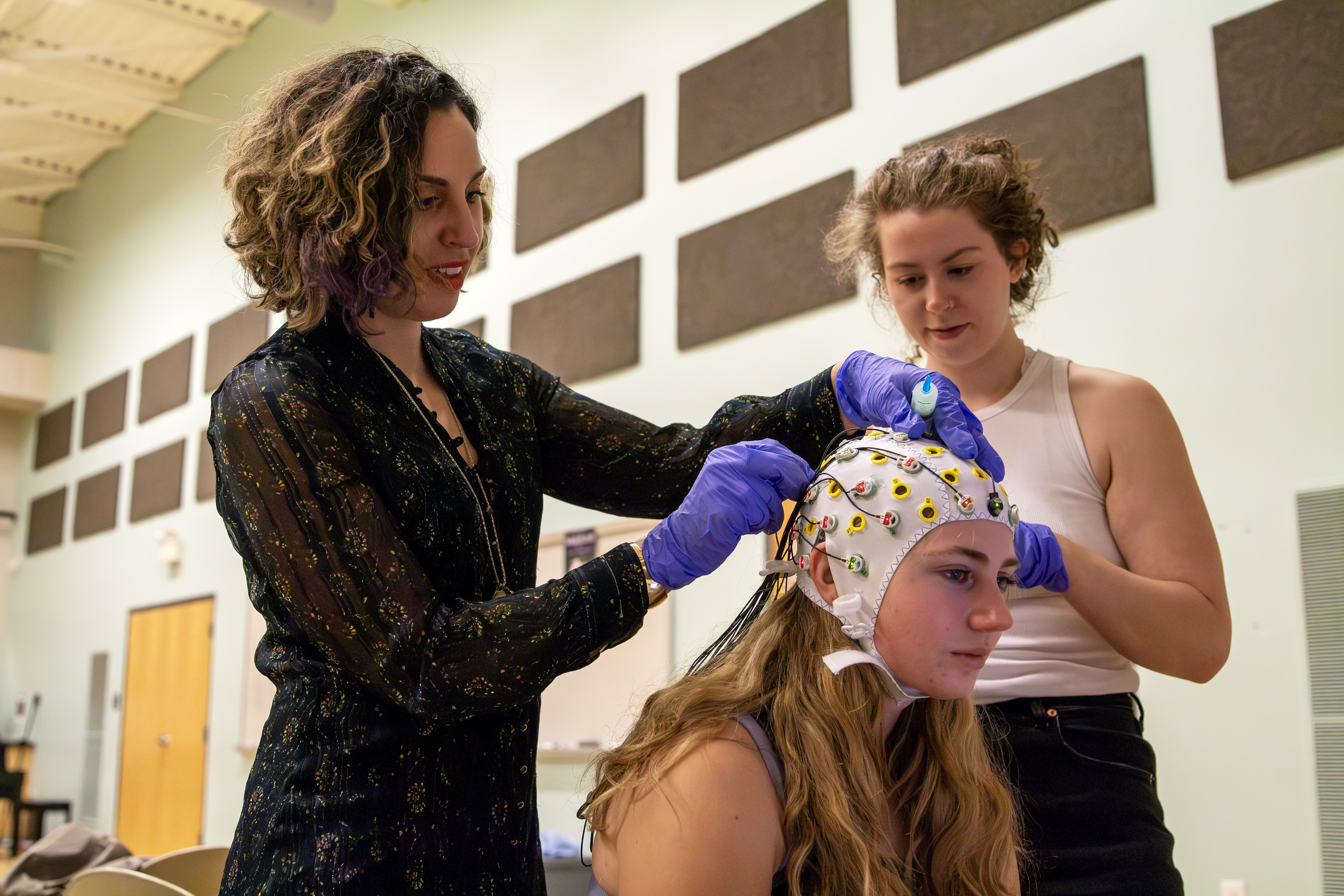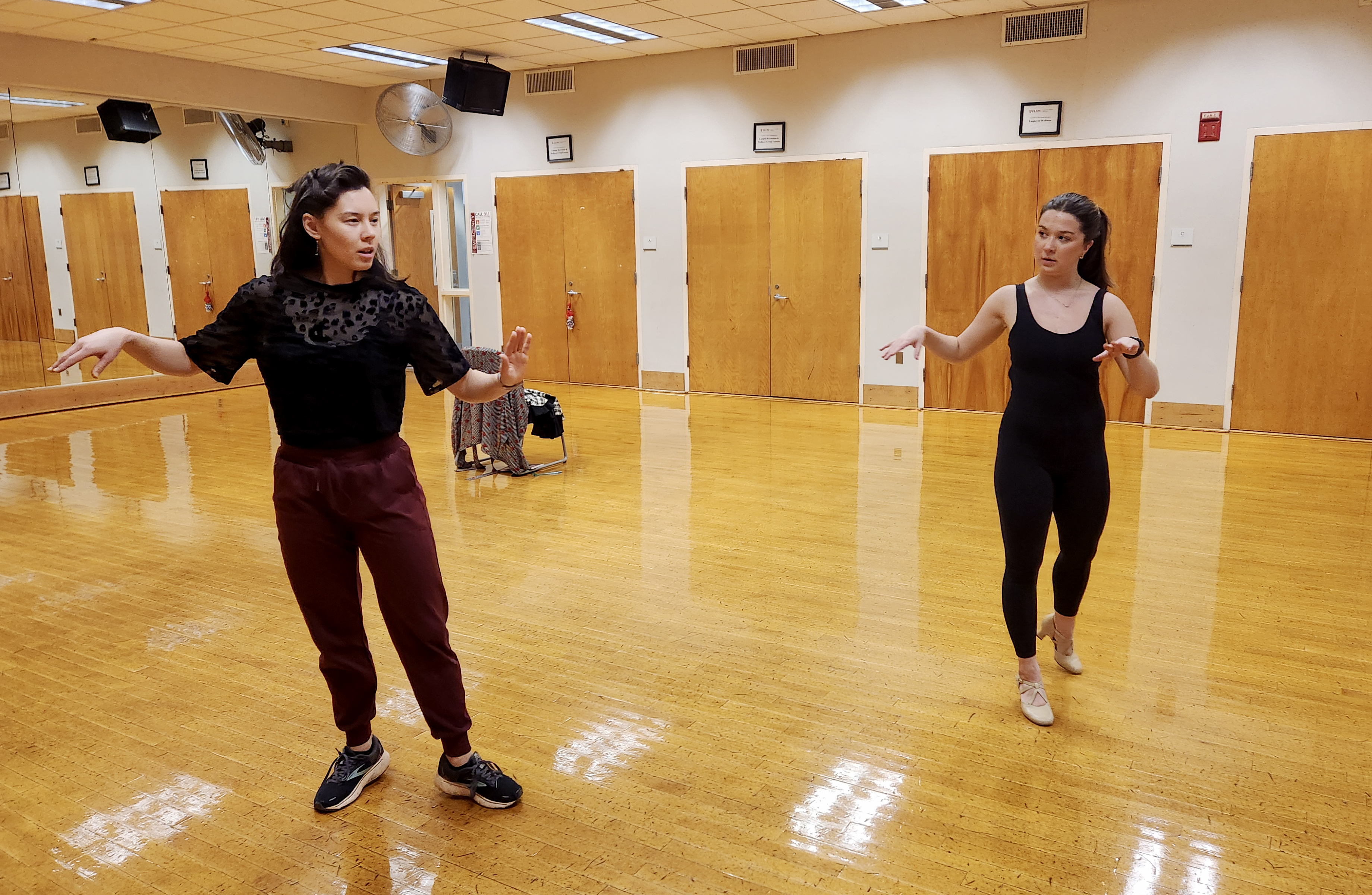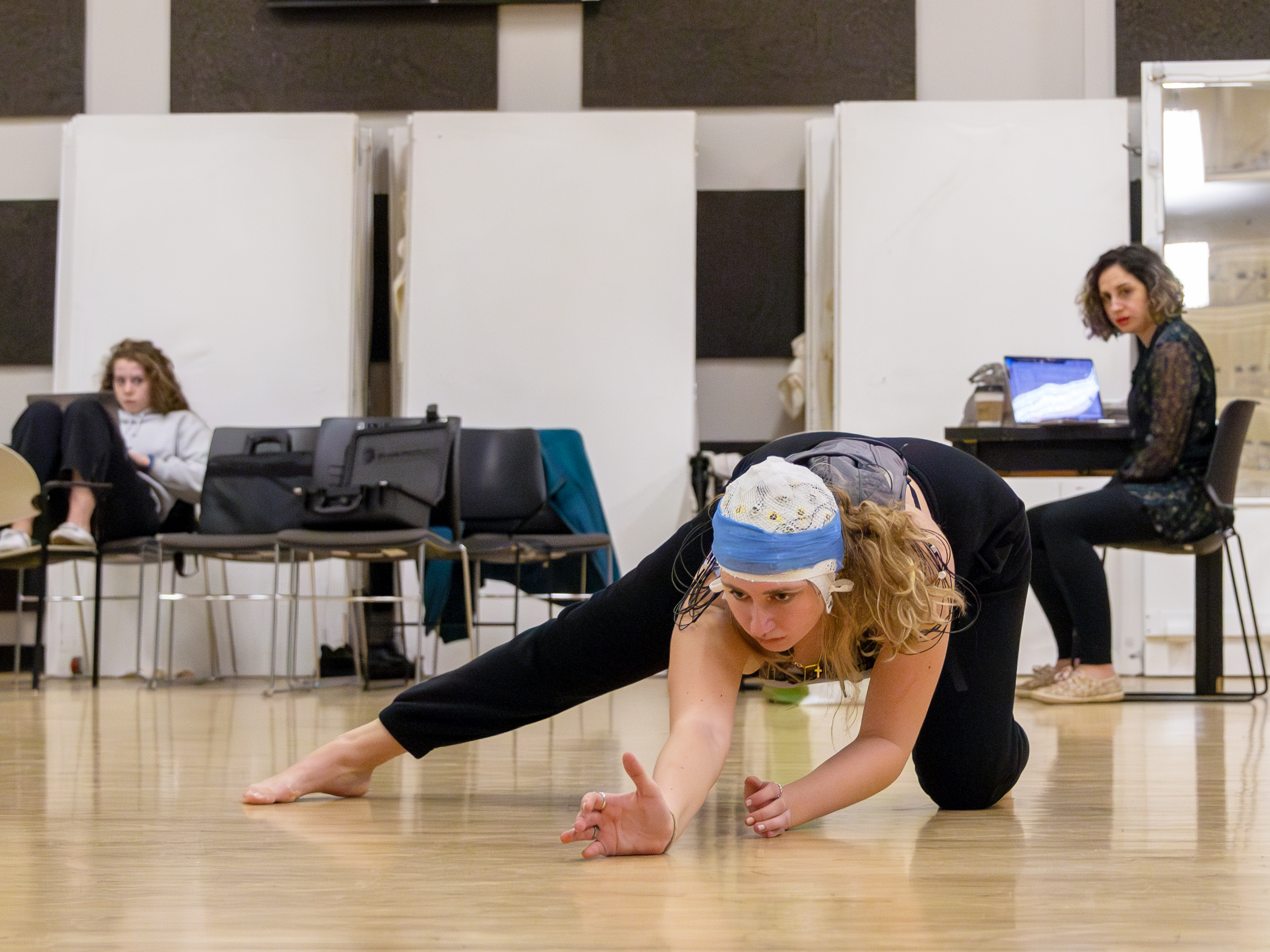With researchers from Virginia Tech’s Embodied Brain Lab, six dancers guided by Assistant Professor Courtney Liu are studying brain activity and how to achieve the flow state. "Finding Flow on SURF Day" is at 6 p.m. April 30 in Roberts Studio Theatre.
Chances are you’ve experienced the flow state or being “in the zone”: That comforting feeling when you’re so immersed in an activity that outside distractions and the sense of time disappear.
You’ve also likely noticed that it’s elusive.

This spring, a team of researchers in Elon’s Dance Science Program and Virginia Tech’s Embodied Brain Lab are examining what happens inside our brains when we’re in flow — and how we can prime our minds to find flow more easily.
The collaboration involves measuring the brain activity of six Elon dance students while they rehearse and perform partially improvised dances. Using Bluetooth-enabled electroencephalography (EEG) caps, Embodied Brain Lab researchers captured dancers’ brainwaves during two rehearsals earlier this semester. The project culminates in “Finding Flow on SURF Day: The Neurophysiology of Dancing Flow States,” when the lab will record dancers’ brainwaves during a final performance.
The concert is at 6 p.m. on Tuesday, April 30, in Roberts Studio Theatre in Scott Studios. Participants will debrief audience members about the process and research before the performance and host a reception afterward. Several audience members will have the opportunity to wear the EEG caps and see what their brain activity looks like while watching a performance.
Students in the study are earning research credit for the course and have read psychological and dance science literature around flow states, with special emphasis on creating pre-performance rituals that enable them to get “in the zone.”

Sophie Seitchik ’26, a dance and choreography and dance science double major from Woodstock, Maryland, has experimented with yoga, meditation, standard dance warm-ups, breathing exercises and positive self-talk to identify practices that drive a mindset that leads to effortless performance. Seitchik is planning a career in physical therapy or counseling for dancers and saw it as “the perfect opportunity to study dancers’ mindsets.”
“For me, flow is like entering another dimension,” Seitchek said. “You’re doing something you love, and you don’t even realize you’re doing it. You come off stage and feel 100 percent confident.”
Assistant Professor of Music Theatre Courtney Liu coordinated the project through professional connections and her research around dancers’ awareness of their bodies and inclusive pedagogy. Liu worked individually with each dancer to identify facilitators and inhibitors of flow and to create performances to induce that state.
“Dancers are looking for flow. Musicians, writers, everyone is looking for this state where you’re so engaged in an activity that your action and awareness become one,” said Liu. “I’m interested in developing practices for these pre-professional dancers to eventually take into the real world to be able to find flow when they want to or to create an internal and external environment that might be amenable to flow.”
The collaboration presents a new opportunity for neuroscience. The human brain is typically studied when we’re still or performing specified tasks like walking on a treadmill. Bluetooth technology opens new avenues for research, and the Embodied Brain Lab is taking advantage.

The Embodied Brain Lab studies the effects of movement like dance, yoga and other somatic movement practices on brain function and physiology, said Julia Basso, the lab’s director and assistant professor in the Virginia Tech School of Neuroscience. They are interested in learning which brainwaves are heightened in people experiencing flow. The semester’s study will also increase knowledge around how the brain behaves during physical activity that’s learned and remembered in the form of choreography but also allows participants to enter the flow state.
“This is the human brain in action doing its thing: Learning choreography, performing improvisational dance. It’s this enriched form of physical activity,” Basso said. “We’re seeing what happens in the mobile brain as it’s changing, and we’re looking at changes in the brain from before and after the rehearsal and throughout the semester-long experience. We can move gracefully and we’re in this full flow state, but how does that translate to what’s happening in the brain?”



